Core Jini (2nd Edition)
W. Keith Edwards W. Edwards
Newly enhanced with the latest standards from Sun Microsystems, Core Jini, Second Editionprovides an in-depth and authoritative resource for building state-of-the-art distributed systems based on Jini 1.1. Aimed at the experienced Java developer seeking to apply this technology in the field, this book mixes a high-level guide describing what Jini is and how it works with plenty of practical code examples to help get you started.
The first part of Core Jinidescribes what Jini is, including its design philosophy and how it provides robust distributed systems for devices like printers, scanners, and digital cameras. Suitably upbeat about Jini's prospects in the marketplace, the author delivers an insider's perspective on how Jini solves many of the problems found in earlier distributed computing. The first hundred pages will help anyone understand Jini, and they are especially ideal for programmers (or managers) who want to see what this standard is all about.
The rest of the text (over 800 pages) provides a practical tutorial that puts Jini to work, starting with a "Hello, World" example. Subsequent chapters cover essential areas of Jini functionality, like discovery, leasing, and the joinprotocol. Besides providing actual source code, the book does a good job of showing you how to compile and run each example program. (This information is particularly necessary with Jini, where, even for testing, programs run in separate pieces in a small distributed system.)Core Jiniteaches you the most common programming strategies for Jini (relying on higher-level APIs and built-in features), and also shows the lower-level APIs in separate sections for the more advanced reader who wants to know more.
Armed with this new edition, any Java developer can learn to take advantage of this late-breaking technology from Sun. All in all, this title is a comprehensive and well-presented tutorial for an exciting new standard that will allow future consumer and computing devices to communicate using Java. —Richard Dragan
Topics covered:
• Overview, history, and design philosophy of Jini 1.1
• Distributing computing essentials
• Installing and running Jini
• Classical network vs. distributed systems
• Advantages of Java and Jini for distributed computing
• Jini services
• A "Hello, World" example for Jini (including basic events and leasing)
• Jini discovery (including basics, IP multicasting, and discovery protocols)
• Searching and matching services with attributes and templates (plus JavaBeans)
• The joinprotocol
• Low-level service interfaces (also search APIs, events, lookup services, and federating services)
• Using the ServiceDirectoryManager
• Sample code for a Jini Lookup Service Browser
• Leasing (including lease negotiation and remote leasing APIs)
• Leased resources and the Landlord paradigm
• Responsibilities of well-behaved Jini services
• Sample code for a complete Jini print service
• Remote events (local vs. remote events, the Jini event programming model, heartbeat events, and event delegates)
• Storing objects with JavaSpaces
• Distributed transactions (including transaction managers and two-phase commits)
• Jini utility services and classes
• A primer for Remote Method Invocation (RMI)
0130894087
McSweeney's Issue 23 (McSweeney's Quarterly Concern)
Dave Eggers
McSweeney'sbegan as a literary journal which published only works rejected from other magazines. After the first issue, the journal began to publish pieces written with McSweeney'sin mind, attracting works from some of the finest writers in the country and many new talents. The journal is committed to finding new voices, publishing work of gifted but underappreciated writers, and pushing the literary form forward at all times.
1932416765
Comics & Sequential Art
Will Eisner
Based on the popular course Eisner taught for several years at New York's School of Visual Arts, this lovingly written book on visual storytelling contains an accumulation of his ideas, theories and advice on the practice of graphic story-telling and the uses to which the comic book art form can be applied. Whether you're a film student, literature student, artist or simply a fan of good storytelling, you'll love this book filled with Eisner's cartoons.
0961472812
Geometry of Design: Studies in Proportion and Composition
Kimberly Elam
At last, a mathematical explanation of how art works presented in a manner we can all understand. Kimberly Elam takes the reader on a geometrical journey, lending insight and coherence to the design process by exploring the visual relationships that have foundations in mathematics as well as the essential qualities of life.
Geometry of Design-the first book in our new Design Briefs Series-takes a close look at a broad range of twentieth-century examples of design, architecture, and illustration (from the Barcelona chair to the Musica Viva poster, from the Braun handblender to the Conico kettle), revealing underlying geometric structures in their compositions. Explanations and techniques of visual analysis make the inherent mathematical relationships evident and a must-have for anyone involved in graphic arts. The book focuses not only on the classic systems of proportioning, such as the golden section and root rectangles, but also on less well known proportioning systems such as the Fibonacci Series. Through detailed diagrams these geometric systems are brought to life giving an effective insight into the design process.
1568982496
|
Founding Brothers: The Revolutionary Generation
JOSEPH J. ELLIS
In retrospect, it seems as if the American Revolution was inevitable. But was it? In Founding Brothers, Joseph J. Ellis reveals that many of those truths we hold to be self-evident were actually fiercely contested in the early days of the republic.
Ellis focuses on six crucial moments in the life of the new nation, including a secret dinner at which the seat of the nation's capital was determined—in exchange for support of Hamilton's financial plan; Washington's precedent-setting Farewell Address; and the Hamilton and Burr duel. Most interesting, perhaps, is the debate (still dividing scholars today) over the meaningof the Revolution. In a fascinating chapter on the renewed friendship between John Adams and Thomas Jefferson at the end of their lives, Ellis points out the fundamental differences between the Republicans, who saw the Revolution as a liberating act and hold the Declaration of Independence most sacred, and the Federalists, who saw the revolution as a step in the building of American nationhood and hold the Constitution most dear. Throughout the text, Ellis explains the personal, face-to-face nature of early American politics—and notes that the members of the revolutionary generation were conscious of the fact that they were establishing precedents on which future generations would rely.
In Founding Brothers, Ellis (whose American Sphinxwon the National Book Award for nonfiction in 1997) has written an elegant and engaging narrative, sure to become a classic. Highly recommended. —Sunny Delaney
0375405445
The Search for the Giant Squid
Richard Ellis
The sea contains many mysteries, and among the most enduring of them are giant squids of the genus Architeuthis. About this squid, known as the "kraken" in classical mythology, we know little, except, oceanographic writer Richard Ellis notes, that "it occasionally washes ashore—and when that happens, we don't know why." Some of these odd creatures, Ellis notes, are 60 feet long, cannibalistic, and patently fierce, with the largest eyes of any animal on the planet (useful for seeing in the inky darkness of the deep sea). They're not the kind of thing you'd want to encounter on a benthic shelf, as Ian Fleming made clear in Doctor No, in which superspy James Bond had one such unpleasant meeting. But, thanks to Ellis's well-researched account, they make the perfect subject for armchair sleuthing, and he tells you just about everything you'd want to know about the giant squid, from the biologists and explorers and cryptozoologists who have hunted for it over the centuries, and much more. —Gregory McNamee
1558216898
|
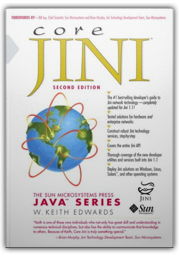

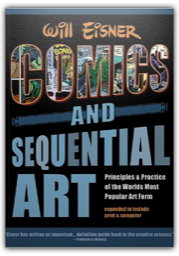


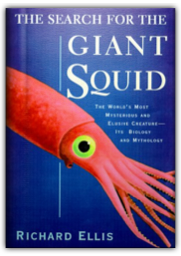



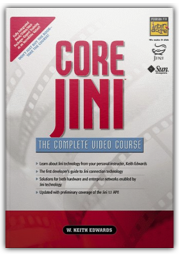
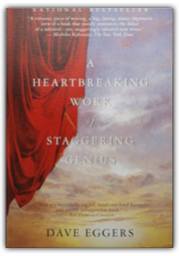





 Made with Delicious Library
Made with Delicious Library